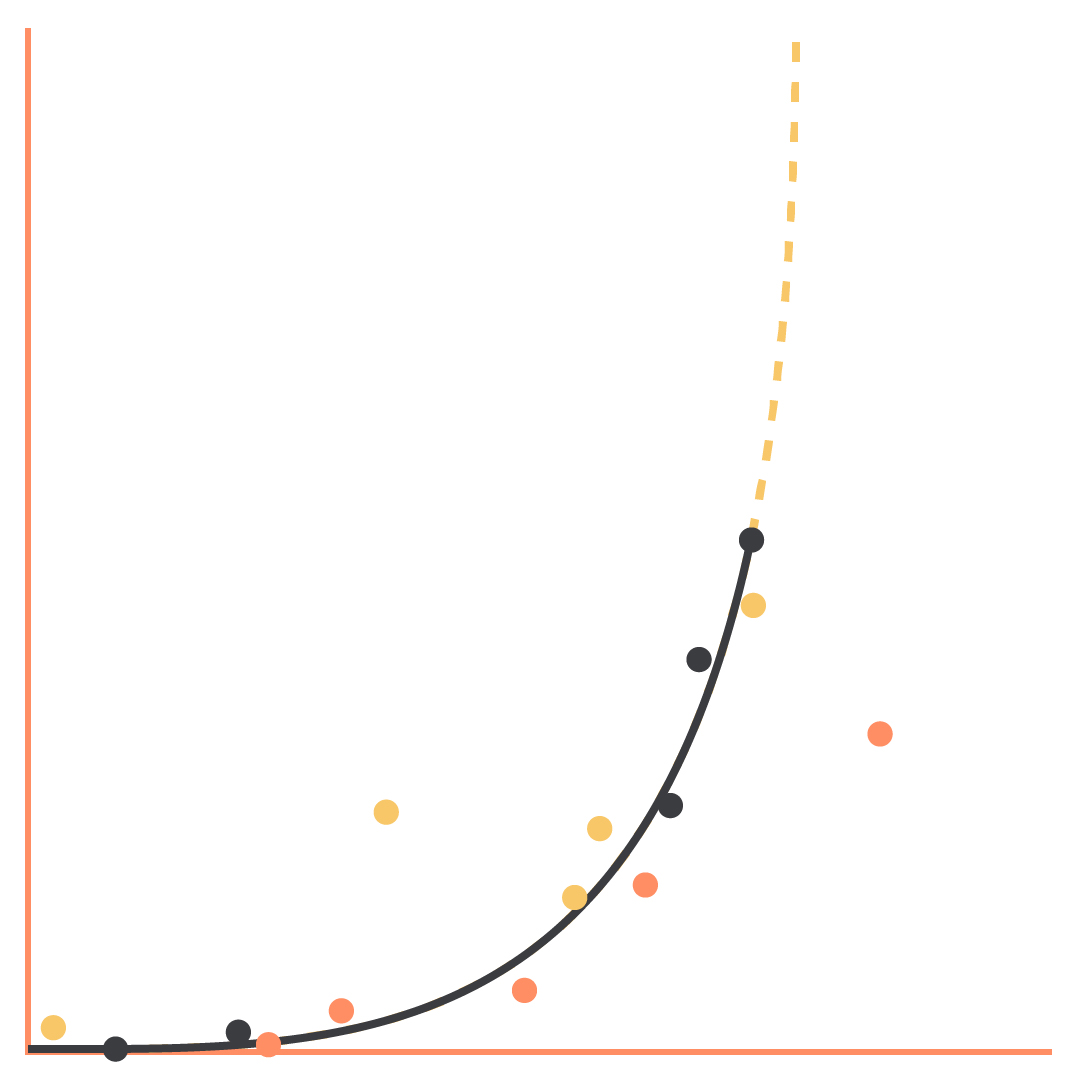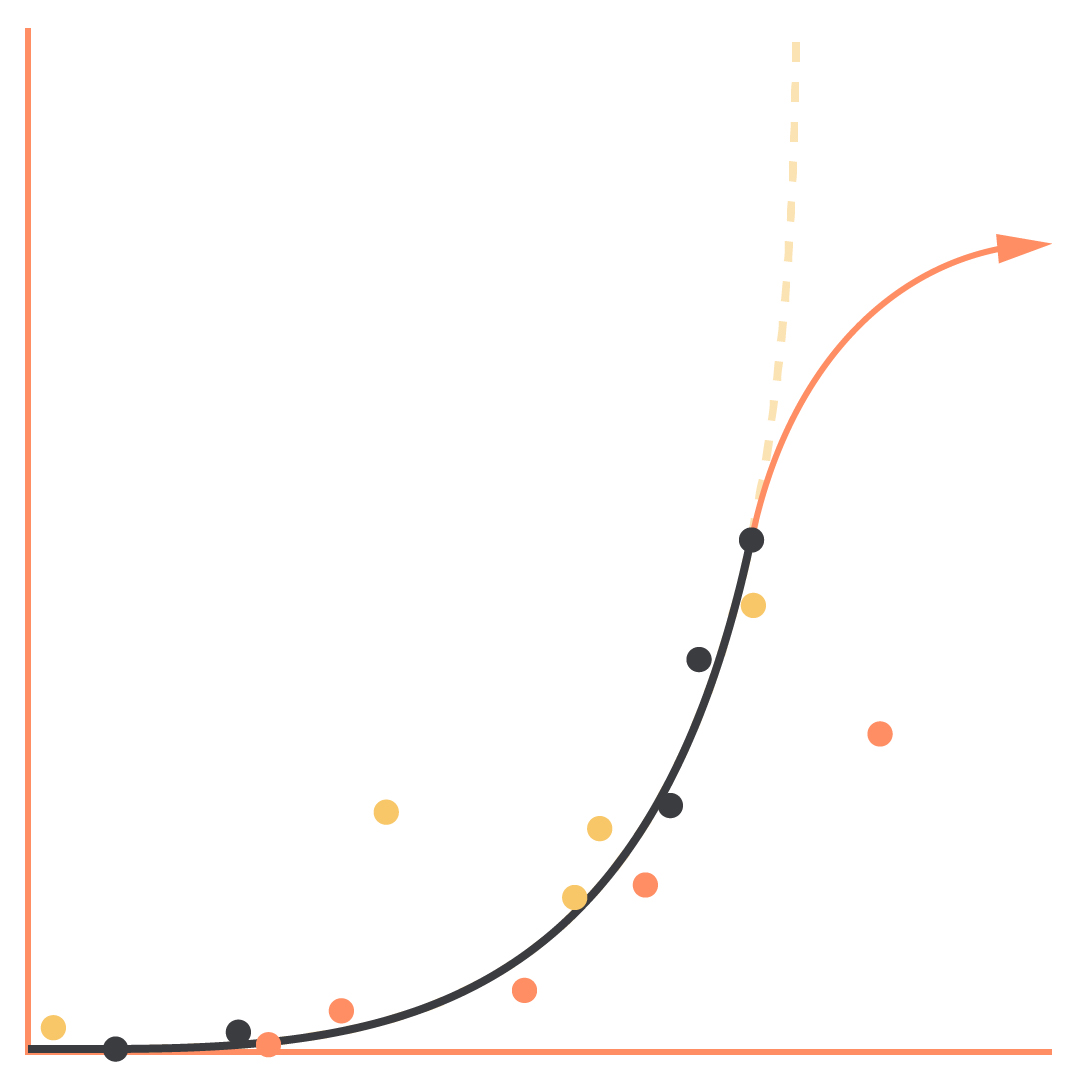Get Hyped!
An image has been circulating on social media, shared by both laypeople and self-proclaimed AI experts. It purports to compare the size of datasets used to train OpenAI’s GPT-3 language model with the upcoming GPT-4 model. Accompanied by captions such as Just Imagine… or This Changes Everything! it has created a buzz of excitement. It looks a little something like this:

An image is worth a thousand words, and this graphic certainly speaks volumes. However, the data labeled as GPT-4, which supposedly dwarfs the already impressive GPT-3 by several orders of magnitude, is complete and utter fabrication.
As of the writing of this article, GPT-4 has not been officially announced, and the extent of publicly available knowledge on the topic is limited. The image does not reflect any actual data and was created merely for the purpose of farming social media engagement.
Speculation has driven the hype to such feverish levels that the CEO of OpenAI, Sam Altman, was compelled to step forward to temper expectations. In an interview with The Verge, Altman stated, The GPT-4 rumor mill is a ridiculous thing. (…) People are begging to be disappointed and they will be.
How did we get here?
AI's Rapid Rise
Artificial Intelligence (AI) and machine learning have seen a remarkable rise in popularity and capability in recent years. What was once the domain reserved for specialists, AI has now become a topic of interest for the general public. With the development of advanced machine learning models such as ChatGPT-3, MidJourney, Dall-E 2 and more, the potential for AI to change the world is rapidly growing. These tools are capable of performing a wide range of tasks, from language translation and image recognition to creative pursuits like generating music and art.
The pace of AI development is constantly increasing, leading to AI’s ability to perform more complex tasks. The rapid changes AI is expected to bring to society are approaching quickly and may occur not in decades, but in just a few years or even months. Many prognoses indicate that the impact of AI on our lives will follow an exponential curve, rising rapidly over time.

A Reality Check
Fueled by predictions, AI’s mindshare in society continues to grow, bringing about unprecedented financial and labor investment. But with this growth comes uncertainty, fear, and even protests against its use. While it may seem like AI’s takeover is inevitable, it’s worth considering that this same exponential growth pattern has been seen before with emerging technologies.
History has shown that innovative advancements in technology often don’t live up to their initial hype. Augmented reality, virtual reality, and the metaverse were once touted as revolutionary technologies that would change the way we compute and interact with our devices, but they have yet to fully deliver on their promise. Similarly, blockchain, cryptocurrencies, and NFTs were supposed to make traditional banking systems obsolete, but they have not yet achieved widespread adoption. Digital assistants were supposed to make our lives easier and our homes and devices smarter, but they have had limited success in doing so.
The over-hyped promise of new technologies changing the world resulted in disappointment and unfulfilled expectations. Despite this, corporations who eagerly jumped on the hype train seem to have failed to learn their lesson, laying off entire departments and quickly pivoting to “the next big thing”.
It is not that XR, Crypto or Assistants have failed, as each of these fields continues to grow and improve at a steady pace. The problem lies in the rate of growth and the expectations that come with it.
The capitalist economy, among other things, is built on the myth of never-ending, continuously accelerating growth. This mindset drives investment strategies, projections, and expectations, leading to disappointment when the reality doesn’t match the hype.
In the real world, everything ebbs and flows. Things sprout and grow, then hibernate. Rainy days alternate with sunny ones, and people have productive periods followed by times when they need to recharge. Similarly, systems and organisms that grow exponentially often meet a violent end, destroying themselves and their host environment in the process.
A more sustainable development model is one of a curve that spikes, then levels off for a while until, perhaps, rising again. This pattern is healthier for both the system and its environment, providing opportunities for rest and rejuvenation before further expansion.

The Present Moment
Our society is trained to be hungry for more. We finish one Marvel blockbuster and eagerly await the after-credits scene teasing the next adventure. We daydream about our next big vacation while working ourselves to the bone and not appreciating the present moment.
The advancements in technology are certain to continue in the future. However, it’s important to keep in mind that the progress may come gradually instead of the rapid advancements that are currently being expected.
Instead of focusing on how AI (that hasn’t been created yet) might change the world, let’s take a moment to recognize the accomplishments we have already achieved and the opportunities AI provides us with today. It’s time to slow down, enjoy the present and appreciate what we have.
Let’s stop and smell the flowers, so to speak.

Footnote: Embracing Benefits of Today's AI
This article is a prime example of what can be accomplished with AI’s assistance. I collaborated with OpenAI’s ChatGPT to write this piece, providing it with ideas, an outline, and bullet points to express my thoughts. In return, the AI generated grammatically sound, well-written paragraphs, which we then refined with further comments and edits.
For someone who never studied English language composition, tools like this can be a significant productivity boost. They help avoid the influence of native language idiosyncrasies, prevent rambling or digression, and allow the writer to stay in full control of the content, ideas, and viewpoints presented.
From Anticipation to Appreciation header image and Smell the Flowers illustration by QubaXR × MidJourney × ChatGPT × Photoshop.
Text prompts inspired by the article were generated with ChatGPT and input into MidJourney’s text-to-image AI. Results were further processed using Photoshop’s neural filters (palette swaps, upscaling) and given a final polish by hand. Graphs drawn by a single human in Illustrator (OMG!)
Prompts:
peaceful, colorful simple illustration showing a vibrant futuristic cityscape in the background, with a male person in the foreground looking back at it with a smile while they stop and smell a flower, symbolizing the importance of enjoying the present while also looking towards the future --ar 2:1 --v 4
peaceful, colorful illustration showing a person taking a moment to stop and appreciate a beautiful flower surrounded by nature. The person is smiling and at ease, as if they have found a moment of calm amidst the hustle and bustle of life. The flowers are blooming and the sky is a vibrant blue, emphasizing the idea of taking time to appreciate the simple things in life --ar 3:2 --v 4